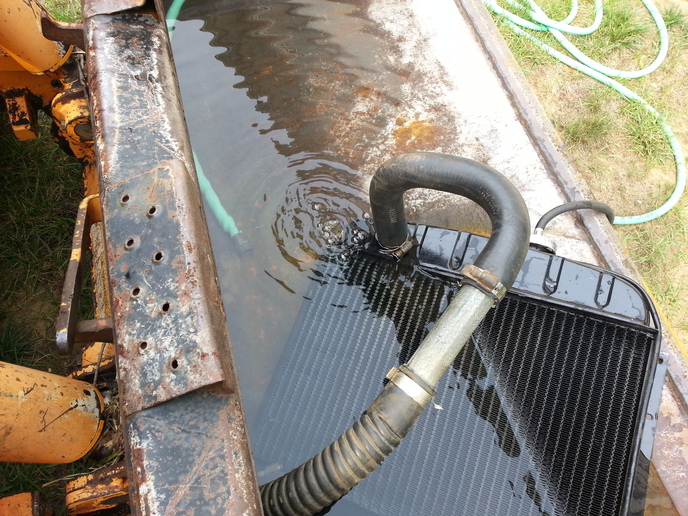You should upgrade or use an alternative browser.
- Thread starter SweetFeet
- Start date
Stephen Newell
Well-known Member
Owen Aaland
Well-known Member
SweetFeet
Well-known Member
Thanks - great idea! He is going to like this idea as it won't cost anything to try. Plus he already devised a method to close the bottom of the tubes by clamping a piece of thick rubber glued onto flatstrap across the bottom of the tubes to do non-pressurized testing.
So thinking he could make a similar piece that incorporates a bike tire valve stem... then fill each tube with soapy water. With both ends sealed, add a bit of pressure - there by being able to check each tube individually.
guido
Well-known Member
When you do pressurize the system, make sure that the pressure is only 10% above the cap's rated pressure. Also do the test when the engine is cold, or you maybe chasing a ghost. Some leaks won't show up becouse of thermal expansion would seal them.
Good hunting.....................Guido.
Billy Shafer
Well-known Member
I used it to find leaks. It turns a bright green. When exposed to water. Can be messy on the hands. But it works well.
Billy Shafer
Well-known Member
SweetFeet
Well-known Member
Thanks for the info. The stuff you refer to in your first reply sounds similar to what ASE guy is talking about too.
Also if the soapy water does not work, maybe our auto mechanic would let him borrow a pressure tester over a weekend when their shop is not open. Good thought.
Russ from MN
Well-known Member
- Location
- Bemidji MN
jon f mn
Well-known Member
Paul
Offandgone
Member
frank
Similar threads
- Replies
- 5
- Views
- 211
- Replies
- 9
- Views
- 1K
We sell tractor parts! We have the parts you need to repair your tractor - the right parts. Our low prices and years of research make us your best choice when you need parts. Shop Online Today.
Copyright © 1997-2024 Yesterday's Tractor Co.
All Rights Reserved. Reproduction of any part of this website, including design and content, without written permission is strictly prohibited. Trade Marks and Trade Names contained and used in this Website are those of others, and are used in this Website in a descriptive sense to refer to the products of others. Use of this Web site constitutes acceptance of our User Agreement and Privacy Policy TRADEMARK DISCLAIMER: Tradenames and Trademarks referred to within Yesterday's Tractor Co. products and within the Yesterday's Tractor Co. websites are the property of their respective trademark holders. None of these trademark holders are affiliated with Yesterday's Tractor Co., our products, or our website nor are we sponsored by them. John Deere and its logos are the registered trademarks of the John Deere Corporation. Agco, Agco Allis, White, Massey Ferguson and their logos are the registered trademarks of AGCO Corporation. Case, Case-IH, Farmall, International Harvester, New Holland and their logos are registered trademarks of CNH Global N.V.
Yesterday's Tractors - Antique Tractor Headquarters
Website Accessibility Policy


